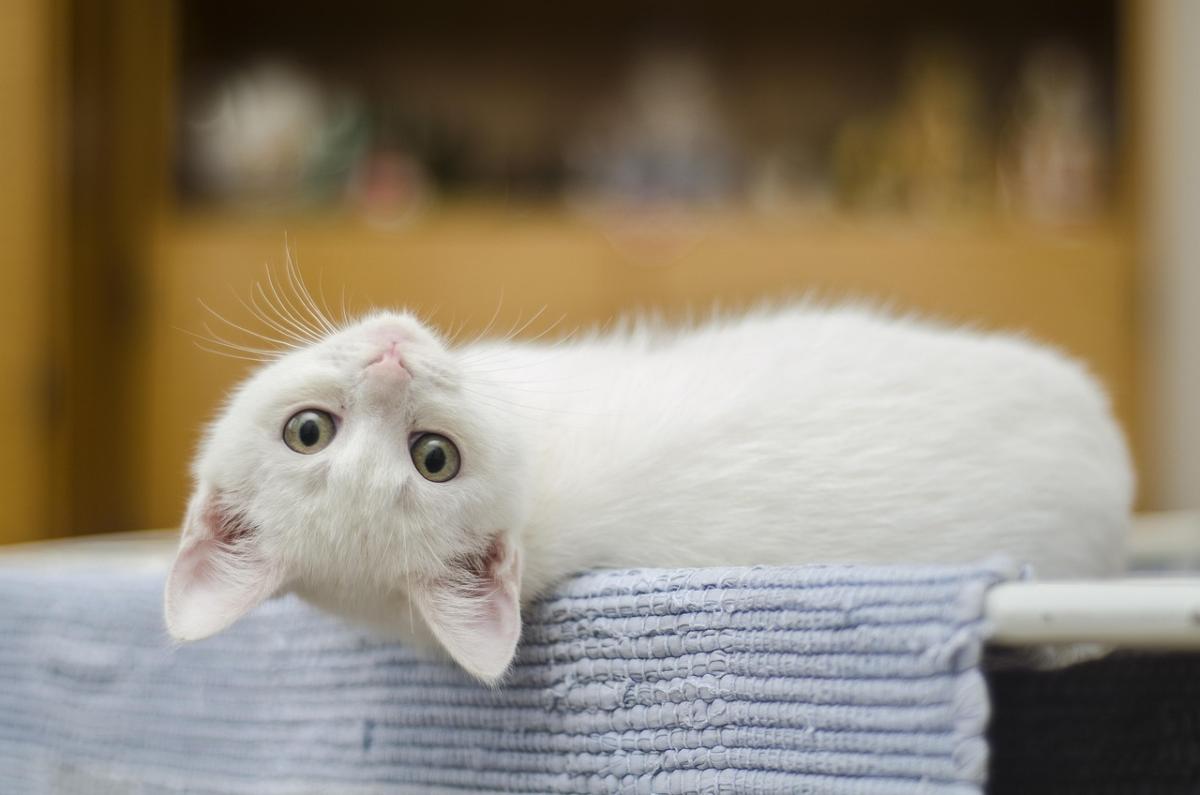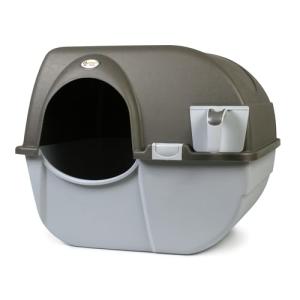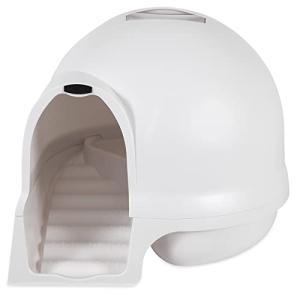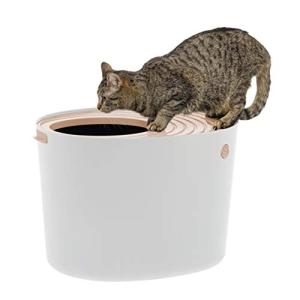You walk into the living room, coffee in hand, and freeze. That unmistakable smell is not coming from the litter box—it’s coming from your carpet. Instantly, your heart sinks. Why is your cat suddenly rejecting the very place designed for them?
Introduction
If you’ve ever owned a cat, you already know: litter box habits are a big deal. When everything’s going smoothly, you hardly think about it. Scoop, dump, replace, repeat. But the moment your cat starts avoiding the box, going outside it, or acting strangely while using it, the litter box suddenly becomes the center of your world.
It’s not just about the mess (though that’s stressful enough). A cat’s litter box behavior can reflect underlying health issues, emotional struggles, or dissatisfaction with its environment. That’s why so many cat parents worry about it: it feels like both a mystery and a message.
In this article, we’ll break down why litter box habits cause so much anxiety, the most common problems owners face, and—most importantly—what you can do to restore peace, cleanliness, and comfort for both you and your feline friend.
Why Litter Box Habits Stress Cat Owners Out
1. The Obvious Mess Factor
Let’s face it—cats going outside the box is inconvenient, smelly, and sometimes downright expensive if carpets, bedding, or furniture are ruined. Even the most devoted cat lover can feel overwhelmed by repeated accidents.
2. The Health Red Flag
Cats are famously good at hiding illness. Unlike dogs, who might whine, limp, or bark when they don’t feel well, cats often suffer in silence. That’s why a sudden change in litter box behavior can set off alarm bells: it might be the only visible sign that something is wrong.
Frequent urination, straining, blood in the urine, or avoiding the box entirely could point to urinary tract infections, kidney disease, diabetes, or even more serious conditions.
3. The Relationship Strain
When litter box issues persist, they can strain the bond between cat and owner. Frustration builds, and some owners may even feel resentment. Sadly, inappropriate elimination is one of the leading reasons cats are surrendered to shelters.
4. The Mystery of Cat Psychology
Sometimes the cause isn’t medical at all—it’s behavioral or environmental. But deciphering what your cat is trying to “tell” you can feel like a guessing game. Too much litter? Not enough? Box in the wrong place? Sharing stress with another cat? The uncertainty adds to the worry.
Common Litter Box Problems and What They Mean
Problem 1: Avoiding the Litter Box
When a cat consistently refuses to use the litter box, it’s often their way of signaling something is off. Possible causes include:
-
Medical issues: Urinary tract infections, bladder stones, constipation, and arthritis.
-
Box aversion: The box isn’t clean enough, or they dislike the type of litter.
-
Stress triggers: New pets, moving, loud noises, or other disruptions.
What to do:
Start with a vet check. Rule out medical issues before assuming it’s “just behavioral.” If the cat gets a clean bill of health, then evaluate the litter box itself: is it clean, large enough, in a quiet spot, and filled with litter your cat actually likes?
Problem 2: Going Right Outside the Box
Cats who faithfully approach the box but then eliminate just outside it are sending a particular message.
Possible reasons:
-
The box is too small.
-
High sides make entry uncomfortable (especially for senior cats).
-
Arthritis or mobility issues make climbing painful.
-
Litter depth is off (too much or too little).
What to do:
Switch to a larger, lower-sided box. Experiment with litter depth. For older cats, consider ramps or low-entry designs.
Problem 3: Straining or Frequent Trips
This one’s a red alert. If your cat is straining, crying out, or visiting the box repeatedly without producing much, it may indicate a blockage, which is a life-threatening emergency—especially for male cats.
What to do:
Seek immediate veterinary care. Do not wait. Even a few hours can make a difference.
Problem 4: Spraying or Marking
Spraying (urinating on vertical surfaces) is different from regular elimination. It’s often tied to territory marking, stress, or a feeling of being threatened.
What to do:
-
Neutering or spaying often reduces this behavior.
-
Provide vertical spaces (cat trees, shelves) to give them a sense of ownership.
-
Reduce stressors and provide multiple resources (food, water, boxes) in multi-cat households.
Problem 5: Pooping Outside the Box
Less common than urination issues but still frustrating, stool outside the box often points to discomfort or dislike. Constipation, diarrhea, or negative past experiences (such as being startled while in the box) can also play a role.
What to do:
Check for diet issues, dehydration, or illness. Make sure the box is comfortable and private.
The Golden Rules of Litter Box Success
Cat behaviorists and veterinarians often repeat a few golden rules that make all the difference:
-
Number of Boxes: One per cat, plus one extra. If you have two cats, that means three litter boxes.
-
Location Matters: Quiet, low-traffic areas are best. Avoid loud appliances, tight corners, or areas with frequent disturbances.
-
Size Counts: Bigger is better. Ideally, the box should be 1.5 times the length of your cat.
-
Cleanliness: Scoop daily (at a minimum). Replace litter regularly. Wash the box with unscented soap every couple of weeks.
-
Litter Preference: Many cats prefer unscented, fine-grained clumping litter. Experiment if you’re not sure.
-
Accessibility: For kittens, seniors, or cats with disabilities, ensure easy entry and exit.
Why Owners Worry—And Why They Should
It’s important to note that worrying about your cat’s litter box habits isn’t overreacting. It’s responsible, attentive pet parenting. Litter box changes can mean:
-
A serious medical issue needing immediate attention.
-
Environmental stressors your cat can’t communicate in words.
-
A solvable mismatch between your cat’s preferences and what’s provided.
By paying attention and acting early, you not only protect your cat’s health but also strengthen your bond.
Practical Steps for Owners
If you’re facing ongoing litter box challenges, here’s a step-by-step approach:
-
Rule Out Medical Causes: Schedule a vet visit first.
-
Assess Box Setup: Size, location, litter type, cleanliness.
-
Adjust Environment: Add more boxes, provide quiet spaces, and reduce competition between cats.
-
Address Stress: Use pheromone diffusers, provide vertical climbing options, and stick to routines.
-
Try Behavior Modification: If needed, consult a feline behaviorist.
When to Call the Vet Immediately
Sure signs mean you should stop troubleshooting and head straight to the vet:
-
Straining or crying while in the box.
-
Blood in urine or stool.
-
Going to the box repeatedly but producing little or nothing.
-
Sudden, drastic changes in elimination habits.
Cats can deteriorate quickly with urinary blockages or other complications, so it’s always better to err on the side of caution.
Final Thoughts
Cat litter box habits aren’t just about cleanliness—they’re about communication. When your cat changes their routine, they’re telling you something. Sometimes it’s medical, sometimes behavioral, but it’s always worth listening.
Yes, litter box issues can be messy, frustrating, and even worrisome. But with the proper knowledge and a little patience, most problems can be solved. Remember: your cat doesn’t want to stress you out. They’re relying on you to decode their signals and help them feel safe, healthy, and comfortable.
Omega Paw Self-Cleaning Litter Box - Grey
Say goodbye to scooping and hello to hassle-free clean-up with this innovative litter box
Product information
$52.99
Product Review Score
4.7 out of 5 stars
155 reviewsProduct links
And in the end, isn’t that what being a good cat parent is all about?








